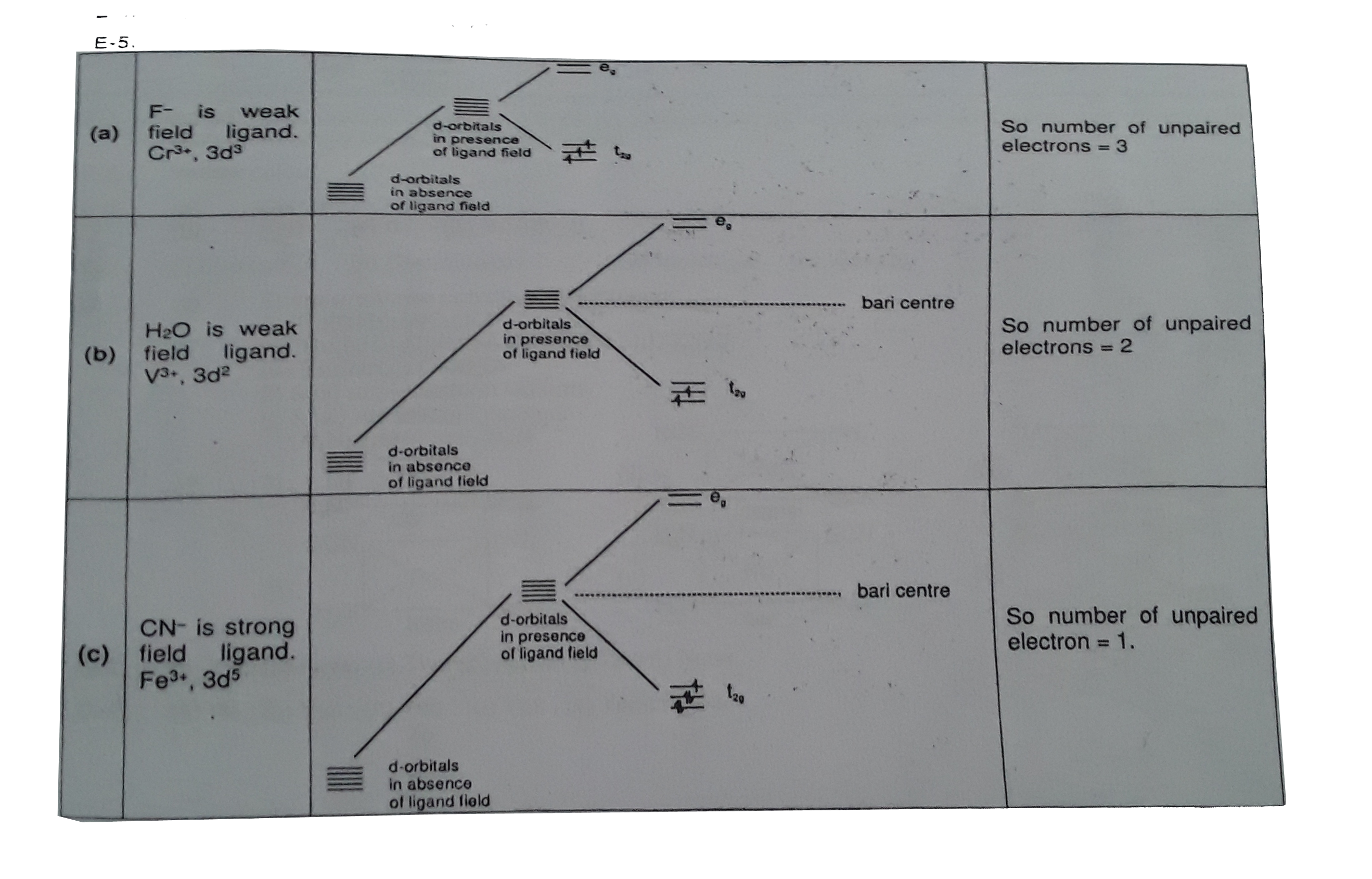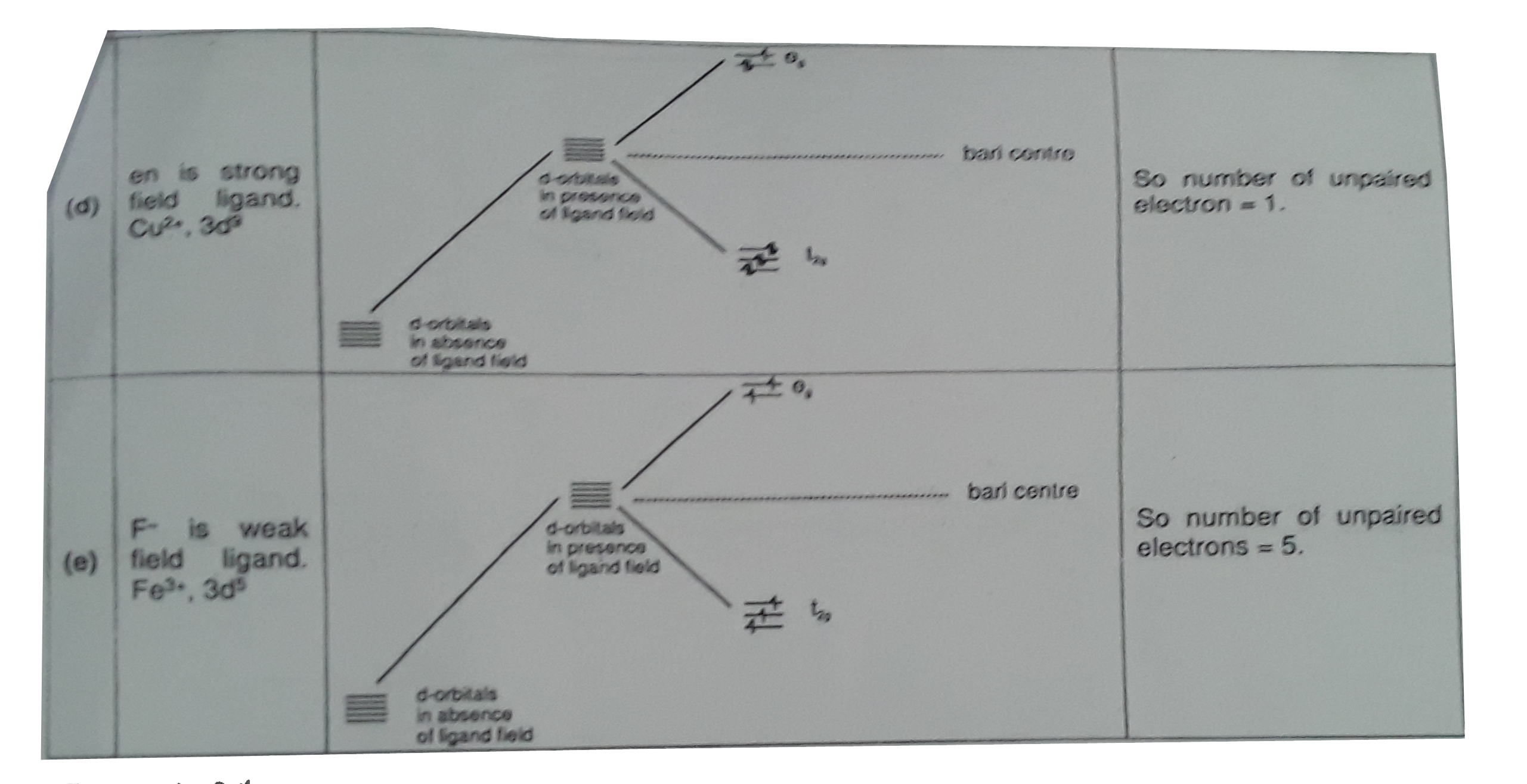For each of the following complexes, draw a crystal field energy-level diagram, assign the electrons to orbitals, and predict the number of unpaired electrons:
(a)[CrF6]3− (b)[V(H2O)6]3+ (c)[Fe(CN)6]3−
(d)[Cu(en)2+3 (e)[FeF6]3−
Text Solution
The following Reaction are

|
Topper's Solved these Questions
- COORDINATION COMPOUNDSBOOK - RESONANCECHAPTER - COORDINATION COMPOUNDSEXERCISE - Exercise Part-I: Subjective Question Section (F)
3 Videos
- COORDINATION COMPOUNDSBOOK - RESONANCECHAPTER - COORDINATION COMPOUNDSEXERCISE - Exercise Part-I: Subjective Question Section (G)
4 Videos
- COORDINATION COMPOUNDSBOOK - RESONANCECHAPTER - COORDINATION COMPOUNDSEXERCISE - Exercise Part-I: Subjective Question Section (D)
2 Videos
- CHEMISTRY IN EVERYDAY LIFEBOOK - RESONANCECHAPTER - CHEMISTRY IN EVERYDAY LIFEEXERCISE - ORGANIC CHEMISTRY(Chemistry in every day life)
31 Videos
- D & F BLOCK ELEMENTSBOOK - RESONANCECHAPTER - D & F BLOCK ELEMENTSEXERCISE - INORGANIC CHEMISTRY(d & f- Block Elments)
40 Videos
Similar Questions
Knowledge Check
Number of unpaired electrons present in[Ni(H2O)6]3+
ATwoBOneCFourDThreeArrange the following in order of decreasing number of unpaired electrons ?
(P)[Fe(H2O)_6)]2+ (Q)[Fe(CN)6]3−
(R)[Fe(CN)6]4− (S)[Fe(H2O)6]3+AS, P, Q, RBP, Q, R, SCR, Q, P, SDQ, R, P, SSame number of unpaired electron is observed in which of the following complexes
(a) [MnCl6]3− (b) [Fe(CN)6]3−
( c) [CoF6]3− (d) [Ni(NH3)6]2+Aa and bBa & cCb & dDc & d
Number of unpaired electrons in [Mn(CN)6]3− is
View SolutionWith the help of crystal field theory, predict the number of unpaired electrons in [Fe(CN)6]4−
View SolutionWith the help of crystal field theory, predict the number of unpaired electrons in [Fe(H2O)6]2+
View SolutionWith the help of crystal field theory, predict the number of unpaired electrons in [Fe(CN)6]4− and [Fe(H2O)6]2+ complexes.
View SolutionNumber of unpaired electrons present in[Ni(H2O)6]3+
View Solution
